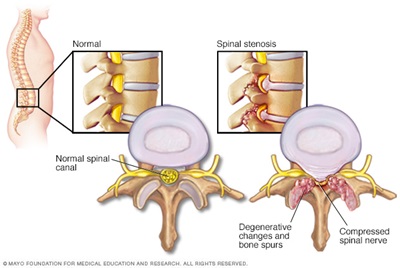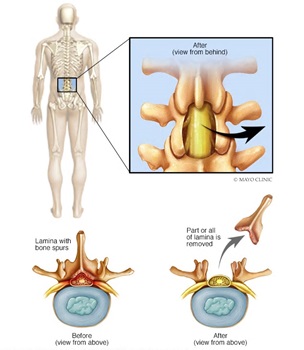
brain, nerve and spine experts.
-
Hospital and Clinic
-
Hospital and Clinic
Spine & Neurological Surgery
Spinal Stenosis Treatment in Mankato, Minnesota
Spinal stenosis is a narrowing of the spaces within your spine, which can put pressure on the nerves that travel through the spine. It occurs most often in the lower back and neck, and is commonly caused by wear-and-tear changes in the spine related to osteoarthritis.
Some people with spinal stenosis may not have symptoms. Others may experience pain, tingling, numbness and muscle weakness. Symptoms can worsen over time. Our surgeons may recommended surgery In severe cases of spinal stenosis to create additional space for the spinal cord or nerves.

Laminectomy
In severe cases of spinal stenosis, doctors may recommend a laminectomy, which is surgery that creates space by removing the lamina — the back part of a vertebra that covers your spinal canal. Also known as decompression surgery, laminectomy enlarges your spinal canal to relieve pressure on the spinal cord or nerves.
This pressure most commonly caused is by bony overgrowths within the spinal canal, which can occur if you have arthritis in your spine. These overgrowths sometimes are referred to as bone spurs, but they're a normal side effect of the aging process in some people.
Some patients are able to have a same-day laminectomy, which means they do not need to stay in the hospital following surgery and are able to go home to recover. The procedure is performed using minimally invasive techniques resulting in smaller incisions, lower risk of infection and, for many people, a quicker recovery.
